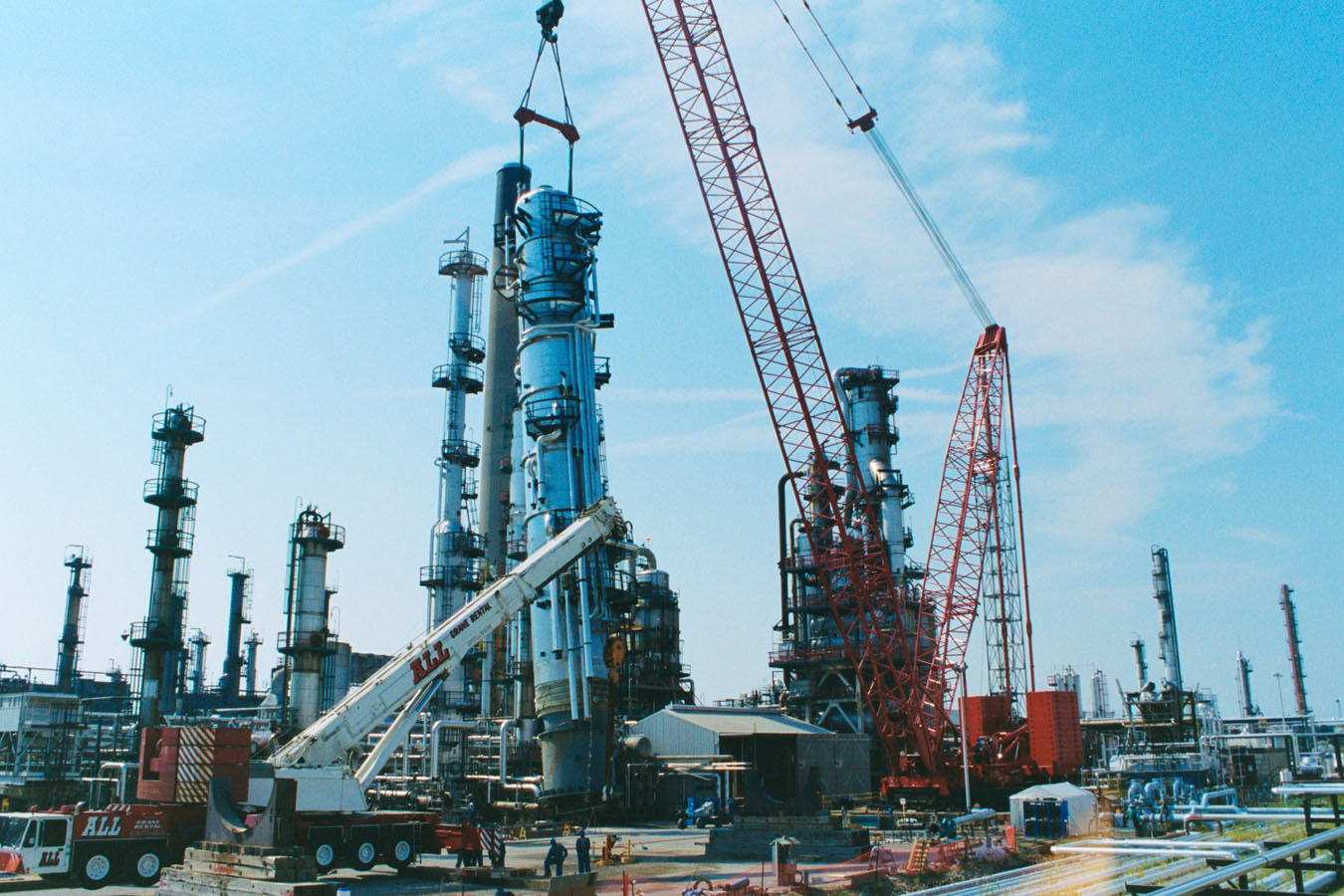OH&S Fines and Violations

Domson Engineering & Inspection were contracted to provide lift engineering services at Petro-Canada’s Oakville refinery during a shutdown occurring this month. The first major lift, however, occurred on August 11, 2002 involving a new 110 foot fractionator tower weighing in at 325,000 lbs.
The tower had previously been offloaded and partially dressed while still on the ground and horizontal. Now it needed to be lifted into the vertical position on a temporary pad to allow the crew to finish its construction.
To raise such a large and heavy vessel required the services of a Manitowoc 888 Ringer crane and a Demag AC1200 (500 ton) all terrain crane. With 275 feet of boom on a 45 foot ring and 60 foot square base, the Manitowoc dwarfed its telescopic partner, usually considered to be a pretty large crane in its own right.
Conditions were perfect for the lift; barely a cloud in the sky. The pre-lift meeting went quickly as everyone already knew what to do and few questions were raised. Once the meeting was over, the operators went out and stood the vessel in about half an hour. Afterwards, an onlooker quipped that the lift had seemed such a big deal but then went so easily, without a hitch or any drama at all. Those of us there just smiled. That was how we planned it.
Planning
Our first task on the project was to determine the loads that the big Ringer would deliver to the ground supporting it. Plant engineering wouldn’t allow any more than 2800 pounds per square foot (PSF) ground loading in order to eliminate the need for extensive ground preparation over the large area that would be occupied by the crane. Software from Manitowoc provided the loads applied by the ring and from there we estimated the ground pressures from the matting to be 2728 PSF – just within tolerable limits.
The ringer crane arrived in pieces on approximately 60 flatbed trucks. Before it could be assembled within the plant, it needed to be fully inspected and certified safe for use. Our engineering personnel reviewed the crane configuration with the rental company and determined critical areas that would require testing. A team of our experienced inspectors was then dispatched under the supervision of our engineering staff to examine those areas using magnetic particle and ultrasonic testing. The crane was found to be in excellent condition with only a few minor repairs before being promptly assembled.
Plans were drawn up showing the location of the Manitowoc and Demag cranes on the site plan. Clearances to surrounding plant equipment were checked and also shown on the drawings together with crane capacities for the most extreme cases and outrigger loading for the Demag crane.
For safety, plant engineering required that we design the lift operation assuming the tower weighed 20% more than actual. Including the rigging, we were designing for a total all up weight of nearly 427,000 lbs. The fractionator’s center of gravity was obtained and the load divided appropriately to each crane for the lift.
The length of the tower as well as its original placement meant that the Manitowoc would have to reach out to 120 feet during the tailing operation. Based on the load carried with the tower horizontal, the Demag was limited to a 46 foot radius. This was not enough – we were six feet short with the 500 ton Demag. Going to a 650 ton crane was an option, but not cost effective.
Instead, the load distribution to each crane was calculated incrementally as the load would be raised to the vertical position. It was found that by the time the 500 ton crane reached 46 feet, enough load would be transferred to the Ringer to allow the Demag to boom out to 52 feet completing the tailing operation. This calculation kept the work in house for the crane rental company (All Canada Crane) thus saving a costly re-rent of a larger crane.
Rigging was sized for each crane and drawn up for easy reference by the riggers to follow on the day of the lift. Elevation views were also created showing all rigging, the tower, and any vertical obstructions that the tower would have to clear during final installation into the plant.
All in all, every detail required to ensure that the lift would be successful was carefully pre-planned so that on the day of the lift, the operation would go like turning a key. And it did. Raising the fractionator tower was quite anti-climactic due to the efforts that had gone into planning the lift – which was just how we wanted it!




